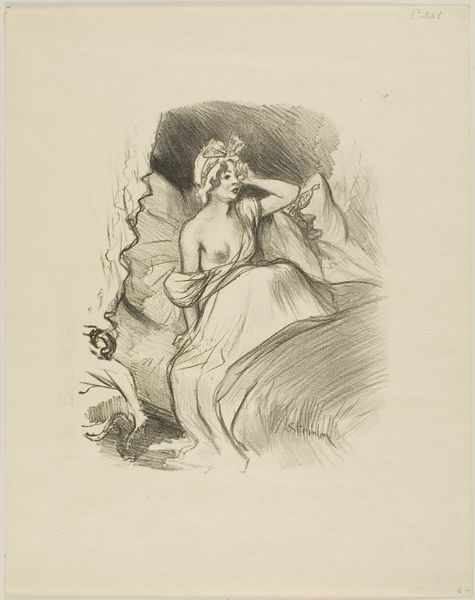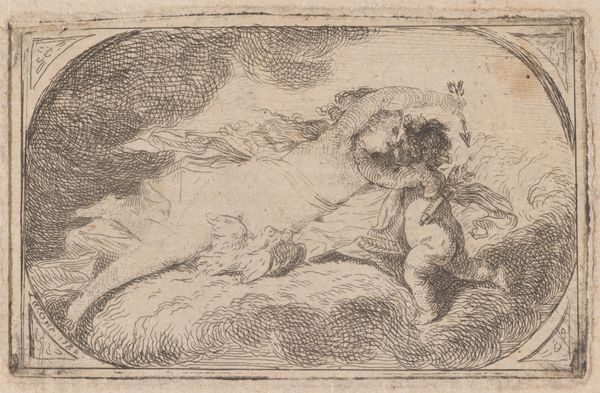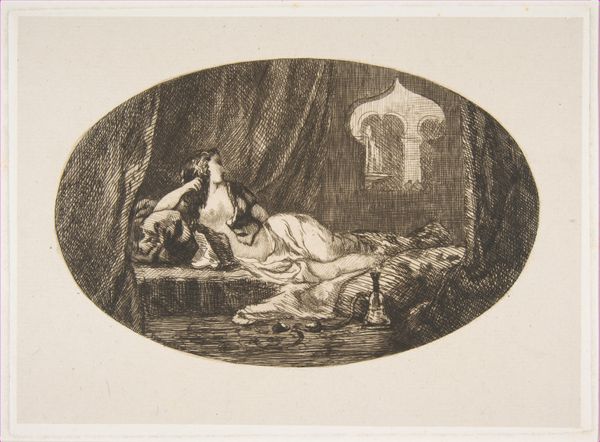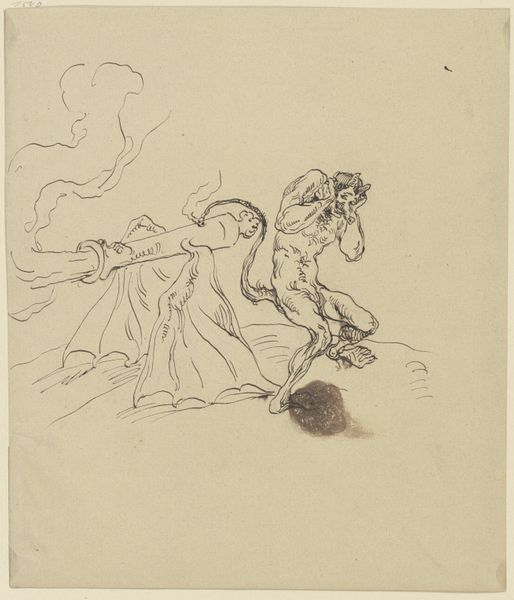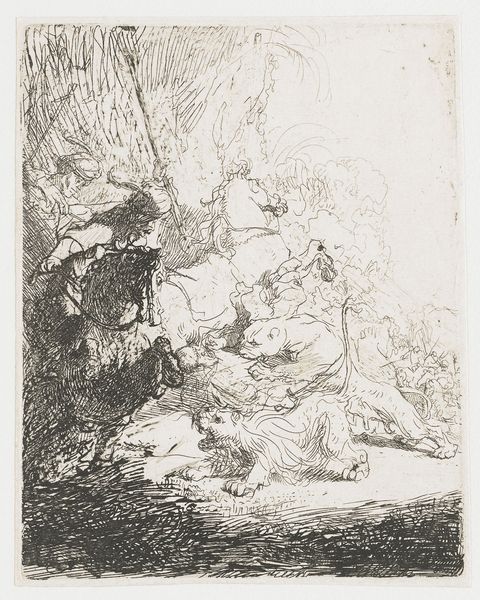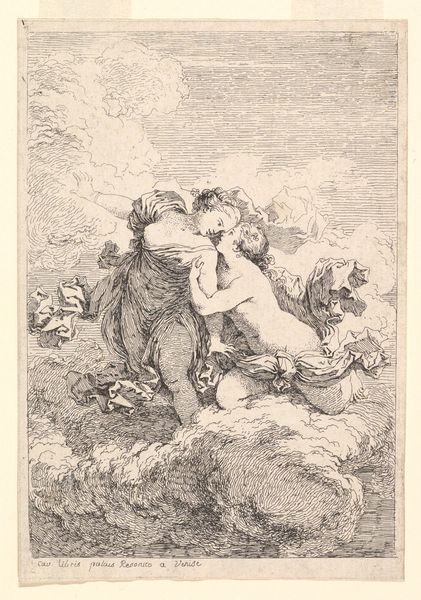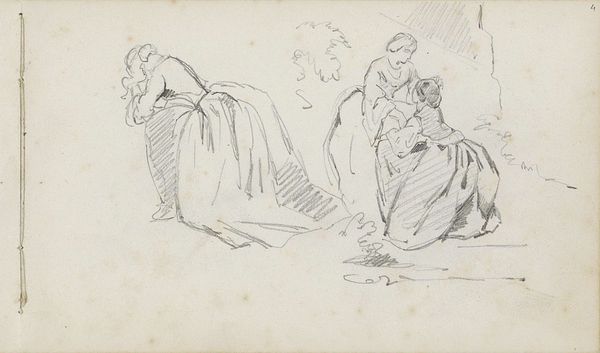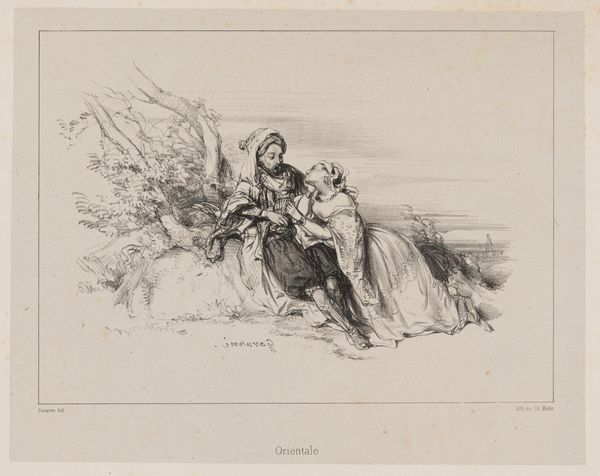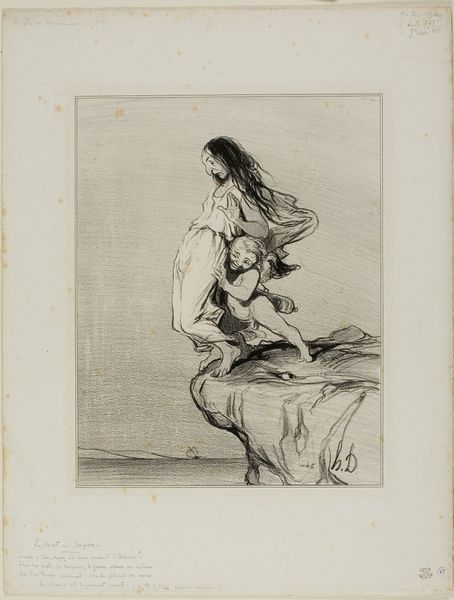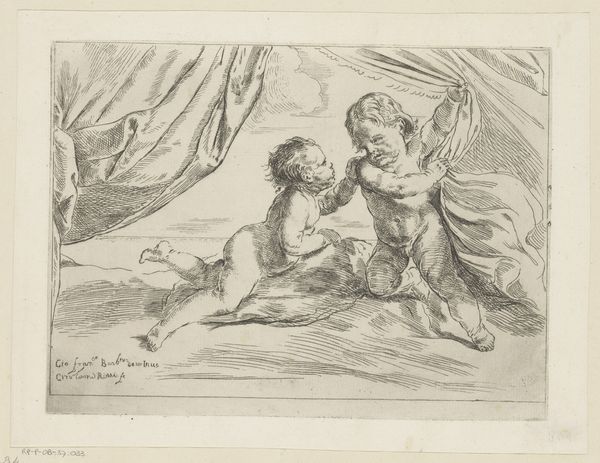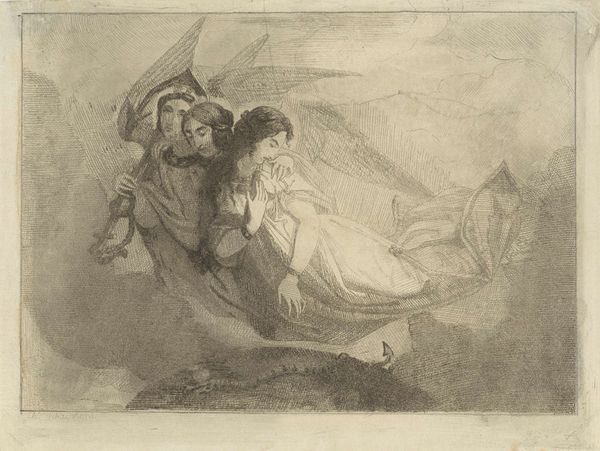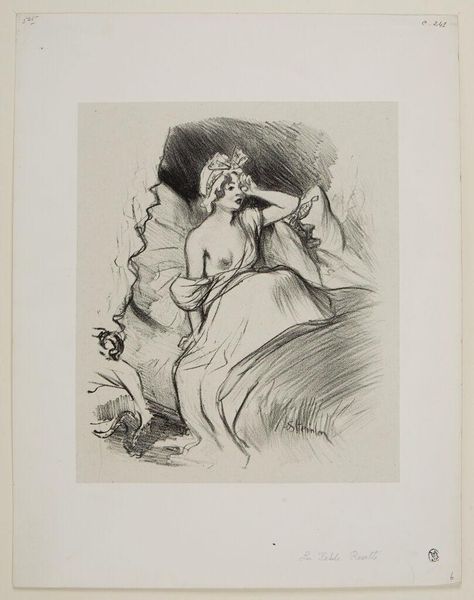
Dimensions: plate: 17.7 Ã 26.7 cm (6 15/16 Ã 10 1/2 in.) sheet: 26.7 Ã 37.6 cm (10 1/2 Ã 14 13/16 in.)
Copyright: CC0 1.0
Editor: This is Thomas Rowlandson's "Love in the East," an undated print at the Harvard Art Museums. It looks like an etching. The scene is pretty intimate. What can you tell me about its historical context? Curator: Well, let's consider the materials and process. Etchings like this allowed for mass production of images. Rowlandson was making commentary accessible to a wider audience. How might the subject matter—this idealized "Eastern" romance—be consumed by the British public? Editor: So, it’s not just about the love scene, but about how Rowlandson, through printmaking, could cheaply distribute commentary about British fantasies or misconceptions of other cultures? Curator: Precisely! It's about the means of production shaping and disseminating ideas, and how these images were circulated and consumed. Editor: I never thought about art in that way. It's fascinating how the process itself becomes part of the meaning. Curator: Indeed. Considering the material conditions of artmaking opens a whole new dimension of understanding.
Comments
No comments
Be the first to comment and join the conversation on the ultimate creative platform.
